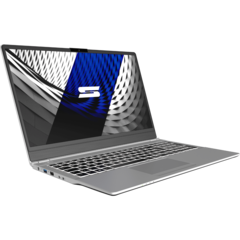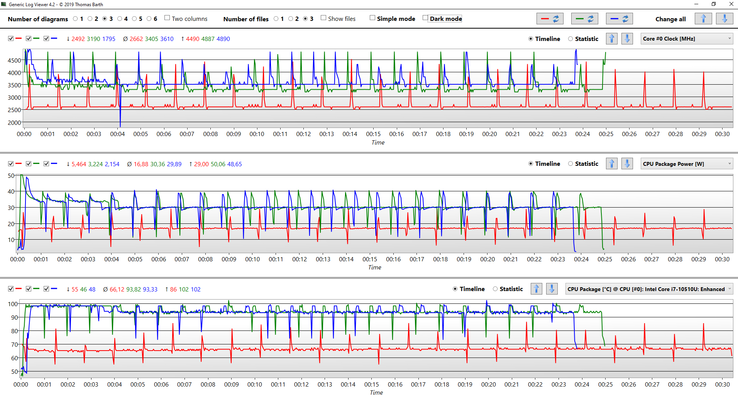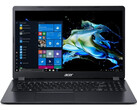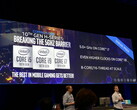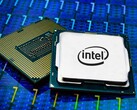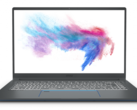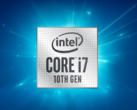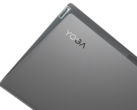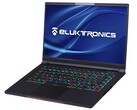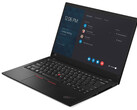(September 4, 2019 update: Additional benchmarks on Comet Lake-U will be run on retail units over time for a more comprehensive evaluation of the CPU series. This short review focuses on a pre-production unit that may not be fully representative of what you'll find on store shelves.)
In addition to the launch of the new 10nm Ice Lake processors, Intel also refreshes its familiar 14nm chips. All the specs of the Comet Lake-U CPUs are listed in our dedicated article, so please have a look at it for more information.
That is the theory, but are the new chips really faster? And should you upgrade or wait a little bit longer for a new machine? We received a pre-production sample of the Slim 15 from the laptop manufacturer Schenker Technologies, which is equipped with the brand-new Intel Core i7-10510U. It is the successor to the Core i7-8565U with slightly higher clocks. The four cores of the new CPU can reach up to 4.3 GHz, whereas the old model stopped at 4.1 GHz. The single-core Turbo was also raised from 4.6 to 4.9 GHz.
By the way, the performance of the integrated graphics unit is identical. Intel changed the name and only calls it UHD Graphics from now on, but it is basically still the familiar UHD Graphics 620. Please see our tech section for more information and benchmarks of the iGPU.
CPU Performance
We know the situation from the previous Whiskey Lake processors: The performance of the mobile CPUs really depends of the individual TDP configuration and the cooling performance. We are, in theory, dealing with 15W CPUs here, but most current laptops allow higher TDP levels. Our pre-production unit of the Slim 15 was set to 51W for short periods (56 seconds) and 17W sustained. This means the processor can handle short peak load (which is important in everyday scenarios) very well, but we think the value for sustained workloads (PowerLimit 1) could be higher. We expect the 17W range for compact 13-inch laptops, otherwise we expect something between 20-25W.
It is therefore important how long the processor can maintain the high Turbo clocks, especially in multi-core benchmarks. Our test unit only scratches the 51W shortly before the power consumption of the i7-10510U slowly starts to drop. Depending on the starting temperature of the CPU, the results can vary quite a bit, and we actually determined results between 700 and almost 800 points in Cinebench R15 Multi. We are already familiar with this behavior from previous generations.
Note: In addition to the default settings, we also performed the tests (especially the Cinebench loop) with additional settings. We raised the PowerLimit 1 from 17 to 30 Watts, which was not too much for the cooling solution of the Schenker Slim 15. We also tried to reduce the core voltage, but we were only able to run it at -70 mV, so there was not that much optimization potential in the case of our pre-production unit.
| Cinebench R15 | |
| CPU Single 64Bit | |
| Intel Core i7-8565U | |
| Intel Core i7-10510U | |
| Intel Core i7-8565U | |
| Intel Core i7-8550U | |
| CPU Multi 64Bit | |
| Intel Core i7-8565U | |
| Intel Core i7-10510U (Stock) | |
| Intel Core i7-10510U (PL1 30W & -70mV) | |
| Intel Core i7-10510U (PL1 30W) | |
| Intel Core i7-8550U | |
| Intel Core i7-8565U | |
Because of the wide performance range, it is not easy to compare the CPU generations. The ideal scenario would be to have identical units with different CPUs. The Schenker Slim 15 with the Core i7-10510U is one of the faster processors, so we decided to compare it with the fastest models of the Core i7-8565U and the Core i7-8550U in our database. The new chip obviously benefits from the higher single core Turbo, especially compared to the Kaby Lake-R 8550U, but all three models are basically on par in the Multi test. This is a result of the limited Turbo, because the Comet Lake-U cannot reach its maximum 4-core Turbo of 4.3 GHz (despite the 51W consumption).
The following diagrams show the results of our Cinebench Multi loop with more detailed CPU data. The cooling solution of the Schenker Slim 15 was able to handle the manually set 30W very well and also managed good scores under sustained workloads. However, we will have to wait for retail units for final results.
Efficiency Comparison with the i7-8565U
Much more interesting than the benchmark scores are the clocks in a direct comparison with the Whiskey Lake predecessor Core i7-8565U. We fixed the power consumption of the processor manually and compared the clocks of the two chips. There can obviously be small differences in terms of efficiency for each chip, but the results are still interesting. We only see an advantage of ~5% in CB R15 Multi for the new Comet Lake-U at a fixed power consumption of 17W. This difference is obviously not really noticeable in practice.
| Core i7-8565U | Core i7-10510U | |
|---|---|---|
| 17W | 2.54 GHz | 2.64 GHz |
| 25W | 2.96 GHz | 3.13 GHz |
| 30W | 3.2 GHz | 3.36 GHz |
| 35W | 3.4 GHz | 3.53 GHz |
| 40W | 3.58 GHz | 3.67 GHz |
| 51W | 3.91 GHz | 3.98 GHz |
6-Core ULV Processor: The Core i7-10710U
The most interesting Comet Lake-U model is probably the new 6-core Core i7-10710U, which should be even faster in multi-core scenarios. However, we will have to wait and see how many manufacturers will actually offer it and if the implementation is a success. The power consumption is definitely in the range of regular 45W CPUs, which is just too demanding for the majority of compact laptops.
The increased requirements from Intel for the implementation of the Core i7-10710U are another problem. The mainboards and cooling units of current models are designed for quad-core chips, which is also the case for the Schenker Slim 15 we have used. According to Intel, however, the Core i7-10710U requires up to 90W in Performance mode, which would require additional voltage regulator phases and therefore new mainboards. Even the regular Comet Lake-U have higher power requirements compared to Whiskey Lake, which is already a big challenge for manufacturers.
Verdict: Comet Lake-U only with a small advantage
It is apparent that Intel tries to get the most out of its optimized 14nm manufacturing process. However, this means that customers do not get faster chips and the actual performance still depends on the individual TDP settings and the cooling performance of a laptop. The new naming scheme is also difficult to understand, especially in combination with the new Ice lake chips.
Comet Lake-U is pretty much the last product with the familiar 14nm process, which is mastered by Intel and therefor cost-effective. If you want a compact laptop with decent performance right now, you can get a Comet Lake-U model, but if you already have a ULV quad-core, there is no need to upgrade. The new Ice lake processors will be more interesting, especially in terms of iGPU performance.


